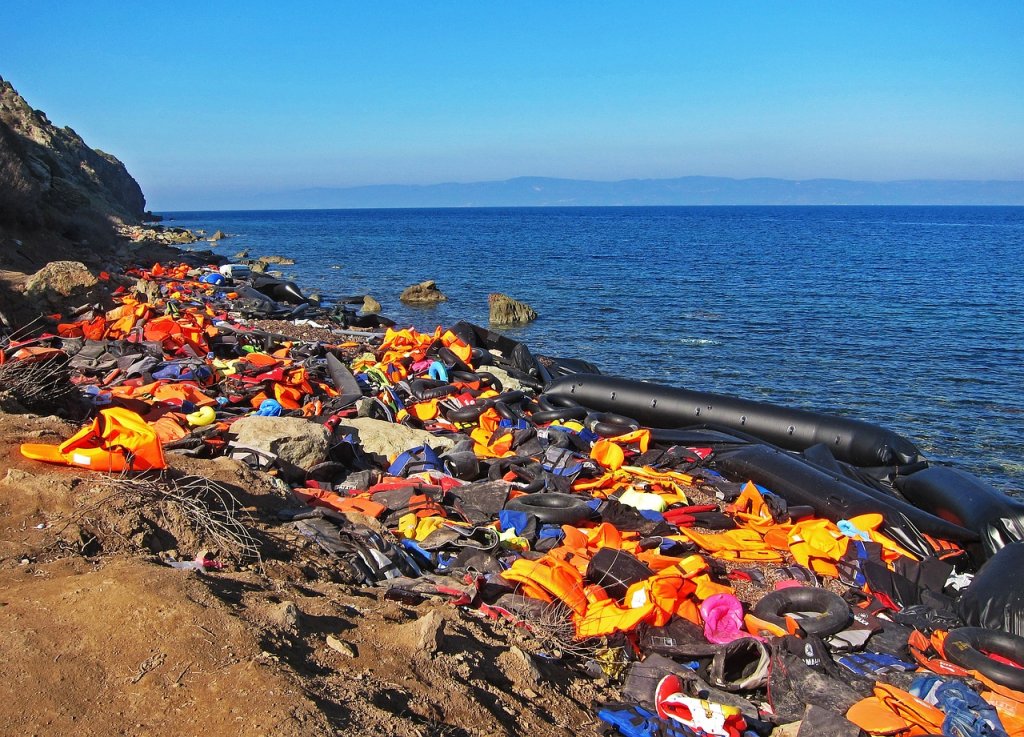
Turkey’s refugee policy has undergone significant transformation since its establishment in 1923. A century-long odyssey witnessed the various phases and shifts in legal and institutional frameworks, bilateral agreements, and international cooperation. The changing domestic and foreign policy considerations and geopolitics have profoundly influenced its approach in this policy field.
At the crossroads of politically, militarily and socially turbulent regions, Turkey has historically been pivotal in the nexus of migratory and asylum-seeking movements. Its strategic geopolitical role has seen it emerge as a key destination for migrants and asylum seekers. The evolution of its refugee policy reflects a complex tapestry of progressive openness, periodic hesitancy, and strategic selectivity, all against a backdrop of global solidarity, security considerations, and national unity. In the discourse on protection in Turkey, a hegemonic discourse based on Islamic doctrine such as “ensar” and “muhacir”, emphasising the historical processes of supporting refugees and referring to the humanitarianism and hospitality of Anatolia draws attention. The most significant factors influencing this policy have been the mass migrations prompted by conflict, political instability, economic tribulations in the Middle East, and the governance imperatives stemming from Turkey’s European Union (EU) candidacy and national policy needs arising from the country’s changing migration profile.
Tracing its origins back to the aftermath of the Ottoman Empire’s collapse, Turkey’s refugee policy and international protection approach have always been dynamic, punctuated by profound shifts and turning points. During the early 20th century, the nascent Turkish Republic was engulfed in a massive population exchange that set the preliminary standards of its refugee policies. In the subsequent decades, the Cold War era marked a period of alignment with Western bloc policies, where the legal and institutional frameworks began to be more systematically structured. The policy architecture then morphed significantly in response to regional upheavals, notably the mass refugee movements triggered by conflicts in neighbouring Iraq and Syria, which have driven Turkey to become the host of the world’s largest refugee population. Following the Syrian Civil War, the Syrian mass migration has created far-reaching consequences for receiving countries, but most importantly for Turkey, with the highest number of registered Syrians under temporary protection, over 3.2 million at the time of writing and over 300,000 international protection status holders, asylum-seekers of other nationalities and stateless persons.
Important Milestones of Turkey’s Refugee Policy:
The historical milestones in Turkey’s refugee policy can be contextualised within three distinct periods: 1923 to 1990, 1990 to 2011, and 2011 to the present day. Each turning point represents a significant phase in Turkey’s refugee policy, reflecting the historical, geopolitical, and humanitarian considerations that have influenced its trajectory over the century.
The first period was marked by the 1923 Turkey-Greece Population Exchange, reflecting Turkey’s early approach towards managing refugee movements and minority populations as more aligned with Western policies. However, the most critical turning point was ratifying the 1951 Geneva Convention Relating to the Status of Refugees with a geographical limitation that confines refugee status to those seeking asylum and fleeing events occurring in Europe. Thus, the policy bespoke a demarcated strategic alignment, demonstrating Turkey’s inclination towards Eurocentric affiliations in its early refugee policy frameworks.
From 1990 to 2011, Turkey’s migration profile began to shift due to regional turmoil and international pressures. The mass migrations following the 1991 Gulf War brought to light the urgent need for a regulatory framework, leading to the introduction of the 1994 Regulation governing mass arrivals. This period also witnesses Turkey’s delicate balancing effort, taking into account national security concerns regarding mass migration originating from the Middle East and the policy expectations of the EU. During this period, Noteworthy, albeit sometimes resistant, reforms were implemented to align the refugee policy and international protection regime with EU standards.
The epoch from 2011 onward has been dominated by the Syrian mass migration, prompting the institution of a temporary protection regime to handle this movement. Legal instruments such as the Law on Foreigners and International Protection (LFIP, 2013) and the Temporary Protection Regulation (TPR, 2014), as well as the establishment of the Presidency of Migration Management (PMM- former General Directorate of Migration Management), respond to long-needed legal and institutional regulations at the national level and are reflective of Turkey’s efforts to harmonise its asylum system with global norms.
Following the European Refugee Crisis in 2015, the EU-Turkey Statement was signed in 2016, exemplifying the use of migration as a tool in foreign policy, which is still controversial and expected to be renewed under new conditions. This agreement, still subject to debate, underscored reciprocal commitments to manage refugee movements and improve living conditions for refugees in Turkey.
Despite these advancements, Turkey maintained the ‘geographical limitation’ clause for the 1951 Geneva Convention and handled non-European asylum applications in practice rather than through legal mechanisms in collaboration with the United Nations High Commissioner for Refugees (UNHCR) until 2018. Then, the refugee status determination (RSD) was fully transitioned to the national mechanism.
Turkey, which evaluates the asylum requests of those coming from countries other than the Council of Europe member states through an implementation practice in cooperation with the United Nations High Commissioner for Refugees (UNHCR), handed over the entire process to the national mechanism in 2018.
Post-2019, Turkey’s policy revealed a pivot toward advocating for the return of refugees to their home countries, especially Syrians under temporary protection, that marked a strategic shift embedded within broader geopolitical, humanitarian, and security calculations. The “return” discourse, which is increasing day by day, causes negative effects on both international protection and durable solutions and integration.
The Unchanging Strategy in a Hundred Years of Change in Refugee Policy: Strategic Temporality
The centennial review of Turkey’s asylum policy showcases the enduring theme of “strategic temporality,” which has been a consistent feature, particularly in the last two periods. This notion encapsulates the complexity of Turkey’s asylum policies, reflecting a governance strategy that employs temporality as a tool to manage refugee situations. This is manifested through legislative, institutional, and discursive strategies that together craft a nuanced approach to reception, protection, and integration within the refugee policy and international protection regime.
The legal component of strategic temporality is the “stratification and differential inclusion.” The proliferation of immigrant categories and legal statutes attributed to migrants constitute legal precarity, becoming the core of strategic temporality as a governance strategy. A key component of stratification is the construction of formal devices of inclusion and exclusion concerning rights. The categorisations reflect the strategic aim of states to redefine, control, manage and include or exclude migrants. Borders function to control movement and separate citizens from foreigners, but differentiation continues through the legal statuses by inserting migrants into national spaces and defining restrictions and impediments.
Differentiated legal statuses and stratifications are very prominent in Turkey’s asylum regime. “Refugee” status is based on Turkey’s obligations under the 1951 Convention; however, only persons from the Council of Europe Member countries seeking international protection are given this status due to Turkey’s geographical limitation. According to the Turkish National Assembly Report (2018), although there is no clear information on how many people have refugee status in Turkey, it is estimated that Turkey has granted refugee status to only 70 people so far. On the other hand, persons who fall within the refugee definition specified in the 1951 Convention but come from a non-European country of origin are instead offered “conditional refugee” status. The most important difference between a refugee and conditional refugee status is that the latter does not offer the prospect of long-term legal integration, and the beneficiaries of this status are excluded from family reunification rights. Conditional refugees are given the right to remain in Turkey until resettled in safe third countries with a strong emphasis on temporality. The LFIP also creates another “subsidiary protection” status, granted to people who cannot be described as refugees or conditional refugees but will face serious threats if sent back to their country of origin or residence, providing further differentiation and stratification via legislation.
The last legal status, based on temporality such as conditional refugee status, is “temporary protection” status, which has dominated Turkey’s asylum regime since 2014 and given to Syrians who came to Turkey after 28 April 2011, refugees under protection in Syria who came via Syria, and stateless people coming from Syria. This status is conferred prima facie on a group basis and provides protection to people who reach the country’s borders in the event of mass migration within the framework of the states’ principle of non-refoulement without wasting time through individual RSD procedures.
Turkey’s geographical limitation and the stratified statuses within the international protection system result in temporality. The legal, institutional, political and discursive frameworks consistently create temporality, precarity and complexity in various stratified legal statuses. The most explicit outcome in this regard is that Turkey does not provide full refugee status to non-European asylum seekers, who make up the majority of internationally displaced people who made their way to Turkey. Behind this strategic choice, one of the motivations can be partially preventing the situation of being a permanent country of asylum that has to oblige in giving all rights, including durable solutions like integration options, particularly in the case of “crisis-like” situations touching upon domestic security issues and geopolitics, as experienced with the mass migration from Northern Iraq (1991) or Syria (2011). However, the differences between refugee and conditional refugee statuses due to geographical restriction lead to a dual structure and double standards in terms of international protection. Moreover, temporary protection adds another layer to the already complex protection regime, which is inherently temporary, creating insecurity for forced migrants in need of international protection. Considering that temporary protection is not the actual protection itself but a temporary measure provided in emergencies such as mass migration movements, it should not be an alternative to international protection.
In the last 100 years, considerable positive developments have been made in accessing asylum and international protection, such as asylum access and judicial appeal procedures. Turkey has improved its compliance with international standards by introducing a comprehensive legal asylum framework through LFIP and the TPR. These two legal regulations guarantee Turkey’s compliance with the principle of non-refoulement and the provision of fundamental rights (including health, education, labour and social services) to asylum seekers, which are the two basic building blocks of the international protection regime. However, as it has been discussed, “strategic temporality” is the key encompassing characteristic of Turkey’s refugee governance. Turkey still dynamically updates its policies to respond to ongoing regional conflicts and global trends and shapes the development of its refugee policy according to changes in the field.

Dr. N. Ela Gökalp-Aras- Swedish Research Institute in Istanbul
N. Ela Gökalp-Aras is a Senior Researcher at the Swedish Research Institute in Istanbul (SRII). She is the Principal Investigator (PI) of GAPS: De-Centring the Study of Migrant Returns and Readmission Policies in Europe and Beyond, funded by the EU. She has a BA degree in International Relations from Ankara University (2000), an MSc (2005), and a PhD (2013) in Sociology from the Middle East Technical University. She works on European integration, EU–Turkey relations, international organisations, international migration (irregular and transit) and asylum regimes, border management, security, international human rights, research and project management. She is one of the editors of the International Journal of Human Mobility (IJHM). E-mail: [email protected]
To cite this work: N.Ela Gökalp Aras, “The Evolution of Turkey’s Refugee Policy: A Multifaceted Journey From 1923 to 2023”, Panorama, Online, 22 March 2024,
Copyright@UIKPanorama All on-line and print rights reserved. Opinions expressed in works published by the Panorama belongs to the authors alone unless otherwise stated, and do not imply endorsement by the IRCT, Global Academy, or the Editors/Editorial Board of Panorama.


